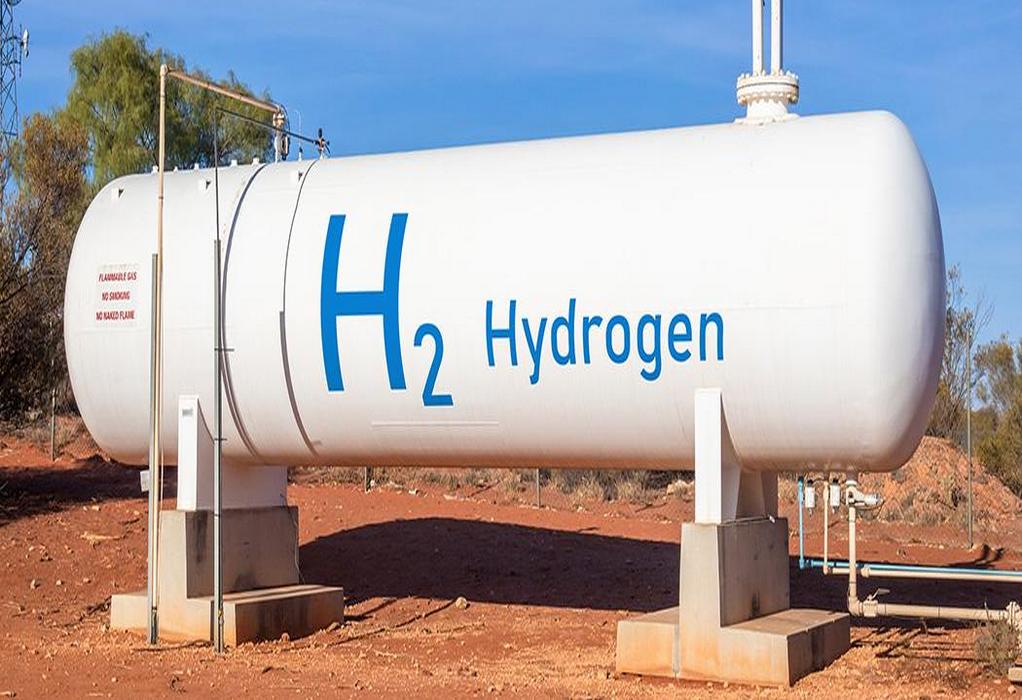Researchers at the Department of Chemistry and Pharmacy and the Chair of Thermal Process Technology at Friedrich-Alexander-Universität Erlangen-Nürnberg (FAU) have succeeded in making invisible hydrogen gas visible to the naked eye in order to prevent the risk of fires and explosions. The key to their research is what is known as supraparticles, tiny particles that change colour as soon as they come near hydrogen.
In future, it is hoped that ‘green’ hydrogen produced using renewable energy will become a key component of a sustainable and climate-friendly energy economy. Although we can neither see nor smell hydrogen gas, it is highly flammable and extremely explosive when it comes into contact with air.
Historical events such as the explosion of the Hindenburg Zeppelin and recently also the explosion of a hydrogen refuelling station in Norway show just how important safety precautions are if we are to establish a sustainable and safe hydrogen economy.
In order to increase safety when handling hydrogen, researchers at FAU have explored the fundamental function mechanisms required for an innovative hydrogen sensor, based on a concept developed at the Fraunhofer Institute for Silicate Research ISC in Würzburg. The following researchers were involved in the project: Prof. Dr. Karl Mandel, Professorship of Inorganic Chemistry; Prof. Dr. Jörg Libuda and Dr. Tanja Bauer, Chair of Interface Research and Catalysis; Prof. Dr. Dirk Zahn, Professorship of Theoretical Chemistry; Prof. Dr. Matthias Thommes, Chair of Thermal Process Technology; and Prof. Dr. Andreas Görling, Chair of Theoretical Chemistry.
Hydrogen sensors can successfully recognise even low concentrations of the gas, for example if there is a leak in the pipeline. The innovative hydrogen sensor designed by the FAU researchers consists of tiny particles, known as supraparticles, and can make hydrogen gas visible to the naked eye without electricity or complex equipment.
The supraparticles are between one and ten micrometres in size, one micrometer is equivalent to one thousandth of a millimetre, and incorporate the violet-coloured indicator dye resazurin. When they come into contact with hydrogen, the molecules in the dye react and visibly change colour in two different stages. If the sensor turns pink, hydrogen has leaked once. If hydrogen is still leaking, and the sensor is in contact with large quantities of hydrogen, it turns colourless. The immediate reaction makes leaks visible and allows them to be found in real time.
A further advantage of the innovative hydrogen sensor is its small size that makes it suitable for use in a number of different scenarios, for example for coating pipelines.
‘The insight we have gained into the workings of the new particle system will allow us to continue to optimise the supraparticles until we can realise their full potential, implement them in real-life applications and make a contribution to a safer hydrogen economy,’ explain the lead authors of the publication Simon Schötz, research associate at ECRC and Jakob Reichstein, research associate at Mandel group.
Source: Friedrich-Alexander-Universität Erlangen-Nürnberg
Tags: FAU, Hydrogen, Renewable Energy, Supraparticles, Thermal Process Technology



Recent Posts
DNV Grants Approval in Principle for New Ammonia Bunkering Vessel Design
Proteus Launches Modular Hydrogen Fuel Cell System for Maritime Sector
Van Oord Unveils Boreas, World’s Largest and Most Sustainable Offshore Wind Installation Vessel
New methanol-fuelled vessel ‘Berlin Maersk’ to enter service
NMPA wins greentech global environment award
CMA CGM in negotiations with Indian shipyards for LNG-powered shipbuilding
L&T to Develop Green Hydrogen and Ammonia Projects in Kandla
Pan Ocean Orders Two Eco-Ready VLCCs from HD Hyundai Heavy Industries